Number Sentence - Definition, Examples, Quiz, FAQ, Trivia
Learn about math equations and how to create them with clear examples and practice activities
What is a Number Sentence?
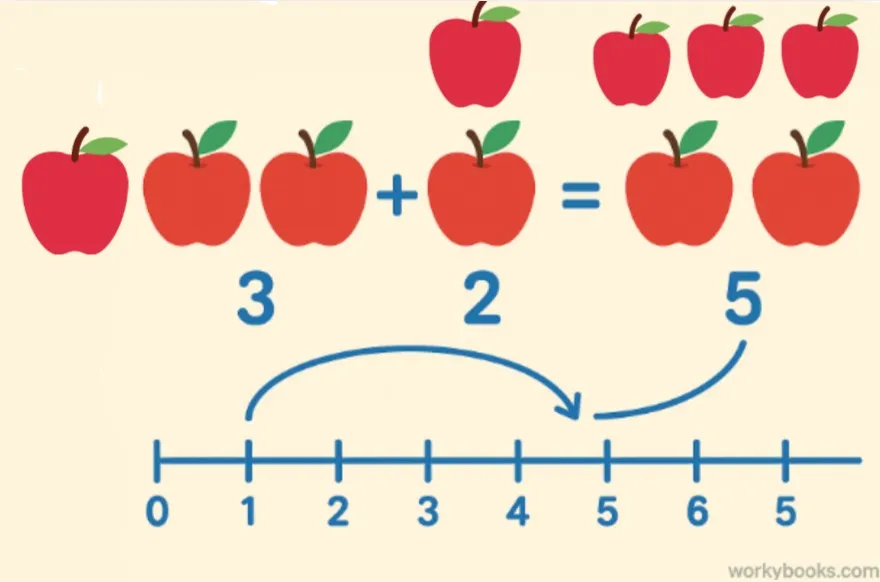
A number sentence is a mathematical statement that shows the relationship between numbers using symbols like +, -, ×, ÷, and =. It tells a math story using numbers and symbols instead of words.
Number sentences help us understand how numbers relate to each other. They can be true or false. For example:
True: 5 + 3 = 8 (because 5 and 3 together make 8)
False: 4 + 2 = 7 (because 4 and 2 together make 6, not 7)
We use number sentences to solve problems, show what we know about math, and explain our thinking. They're like math puzzles that help us understand how numbers work together.
Addition Sentence
Three plus four equals seven
Subtraction Sentence
Nine minus two equals seven
Multiplication Sentence
Five times three equals fifteen
Division Sentence
Twelve divided by four equals three
Key Concept
A number sentence must have an equals sign (=) to show that both sides balance. Without the equals sign, it's just an expression, not a complete sentence.
Parts of a Number Sentence
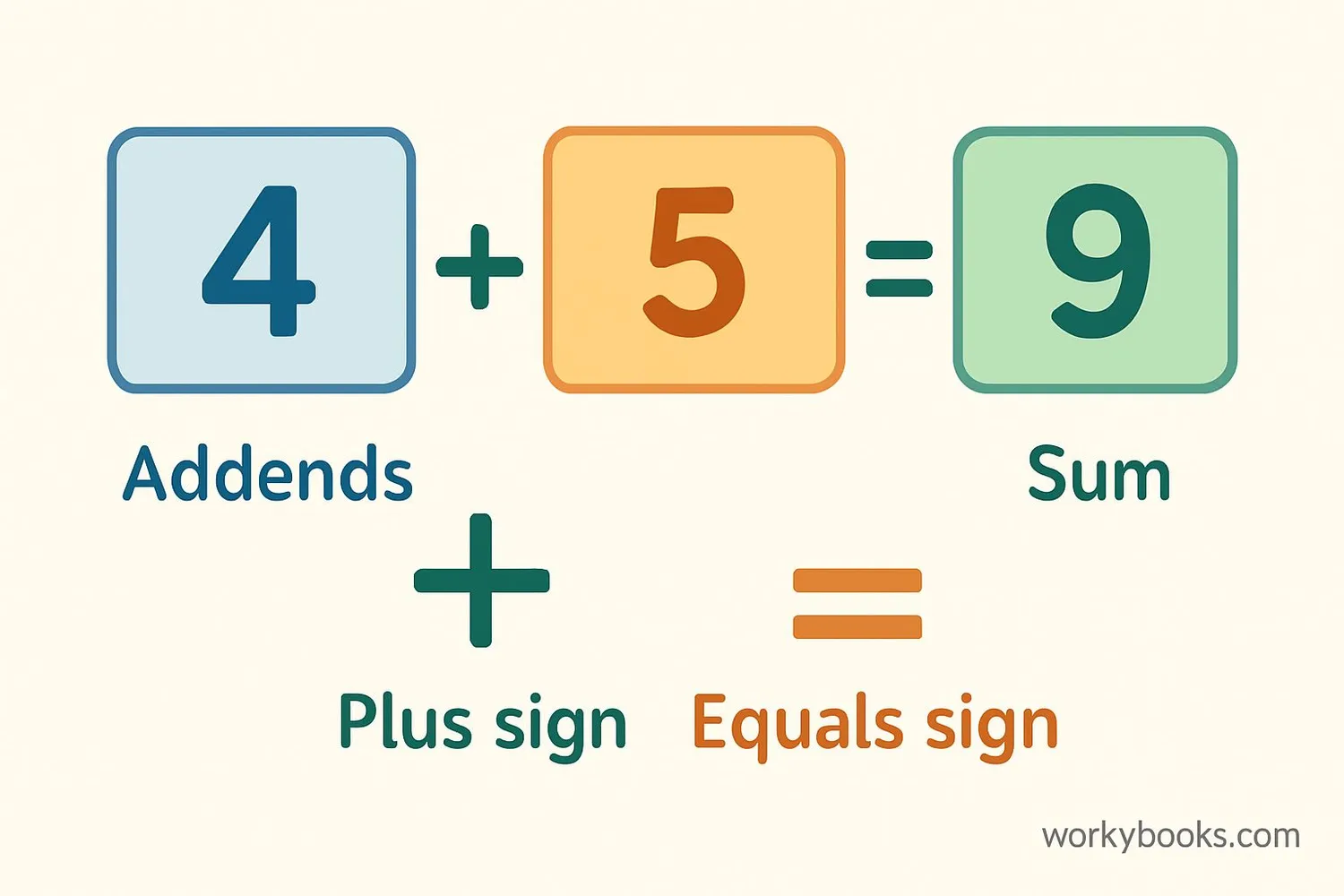
Every number sentence has special parts with specific names. Let's look at an addition sentence:
Addition Sentence Structure
Addends: These are the numbers being added together. In 3 + 4 = 7, the addends are 3 and 4.
Sum: This is the result of adding the addends. In 3 + 4 = 7, the sum is 7.
Plus sign (+): This symbol shows that we are adding numbers together.
Equals sign (=): This symbol means "is the same as" or "balances." It shows that what's on the left side has the same value as what's on the right side.
In subtraction sentences, we have:
Where the minuend is the starting number, the subtrahend is what we take away, and the difference is the result.
Remember
In any number sentence, the equals sign is the most important part because it shows that both sides are balanced and equal.
Making Number Sentences
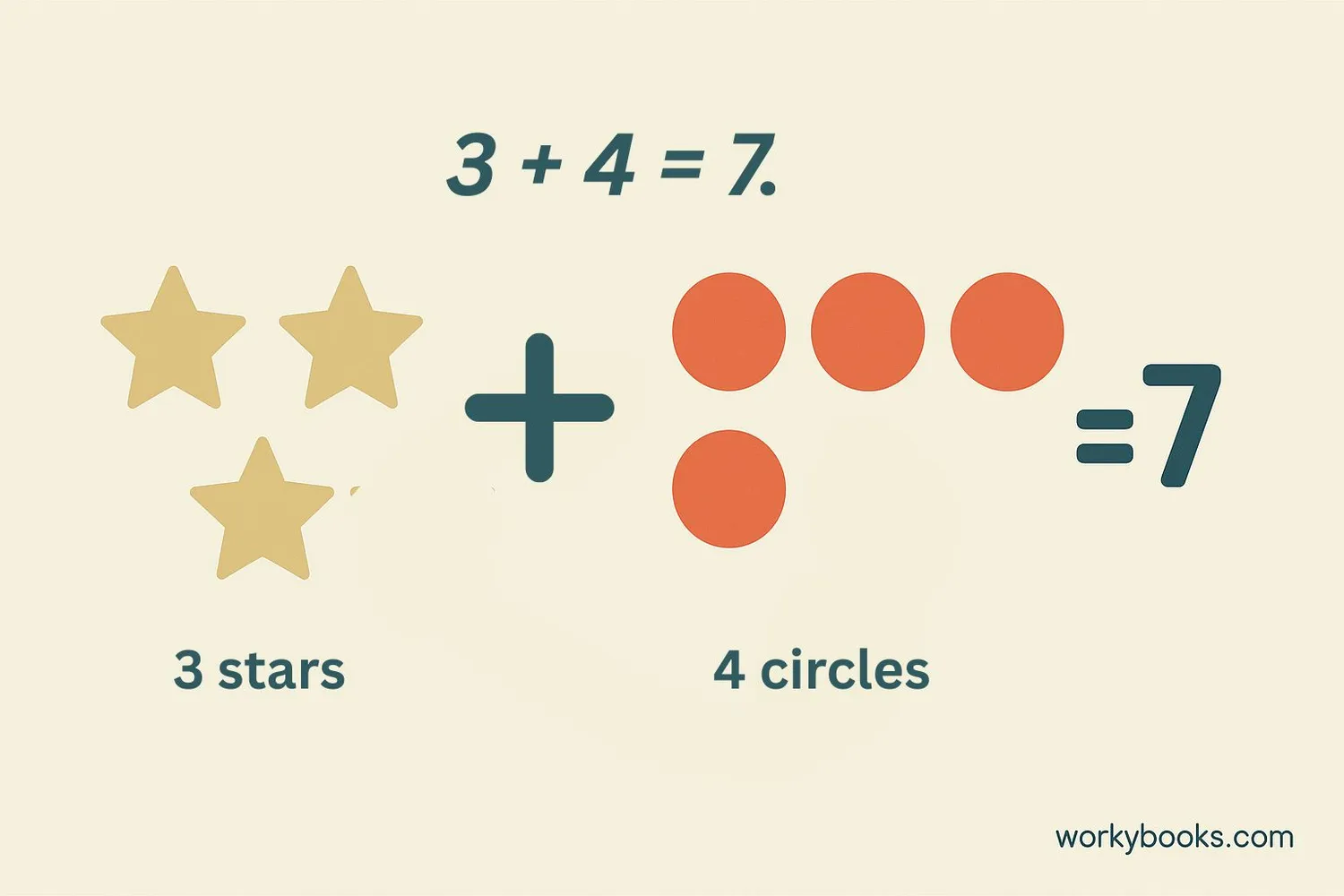
Creating number sentences helps us describe real-world situations with math. Here's how to make your own number sentences:
Step 1: Look at a situation with numbers. For example: "I have 2 apples. My friend gives me 3 more apples. Now I have 5 apples."
Step 2: Identify the numbers: 2 apples to start, 3 apples added, 5 apples total.
Step 3: Write the number sentence: 2 + 3 = 5
We can also make number sentences from pictures or diagrams. For example:
Picture to Sentence
2 apples + 3 apples = 5 apples
Word Problem
Tom has 7 pencils. He gives 2 to his friend. How many pencils does Tom have left?
Practice Tip
Look for math in everyday life - when sharing snacks, counting toys, or dividing chores. Create number sentences to describe these situations!
Solving Number Sentences
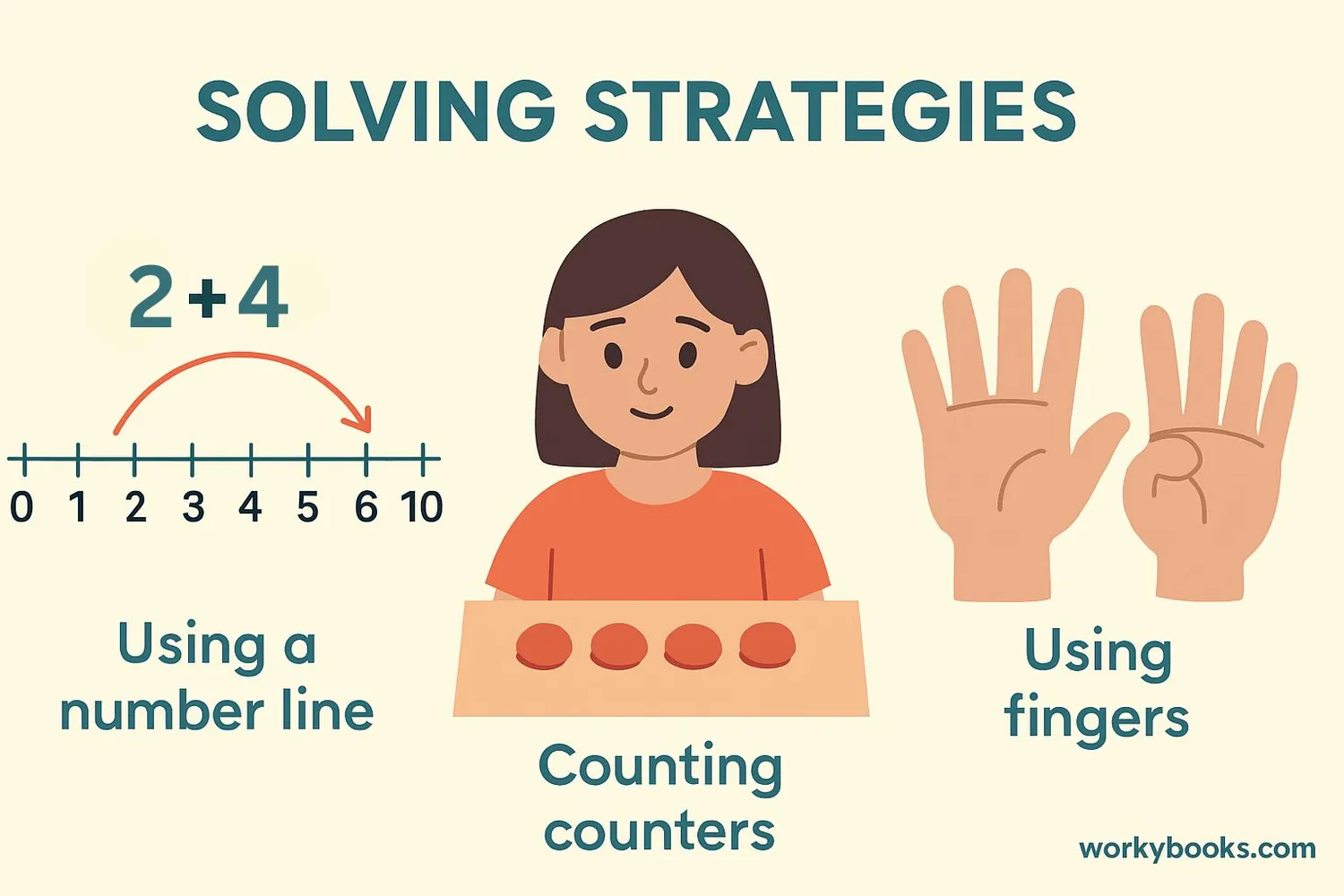
Solving number sentences means finding the missing number that makes the sentence true. There are many strategies to solve number sentences:
Counting On: Start with the first number and count up. For 6 + 3, start at 6 and count 7, 8, 9.
Using Objects: Use counters, blocks, or drawings to represent the numbers. For 5 - 2, count out 5 objects, remove 2, then count what's left.
Number Lines: Draw a number line and hop forward for addition or backward for subtraction.
Making Ten: For 8 + 5, think: 8 + 2 = 10, and 10 + 3 = 13 (since 5 is 2 + 3).
Decomposing Numbers: Break numbers into parts. For 14 - 6, think: 14 is 10 + 4, 10 - 6 = 4, then 4 + 4 = 8.
Let's practice solving:
Example 1: ? + 4 = 9
Solution: We need to find what number plus 4 makes 9. Counting up from 4 to 9: 5, 6, 7, 8, 9 (that's 5 numbers), so 5 + 4 = 9.
Example 2: 12 - ? = 7
Solution: We need to find what number subtracted from 12 leaves 7. Start at 12 and count down until we reach 7: 11, 10, 9, 8, 7 (that's 5 numbers), so 12 - 5 = 7.
Strategy Tip
If you're solving for a missing addend, you can subtract the known addend from the sum. For ? + 5 = 12, solve 12 - 5 = 7.
Number Sentences in Word Problems
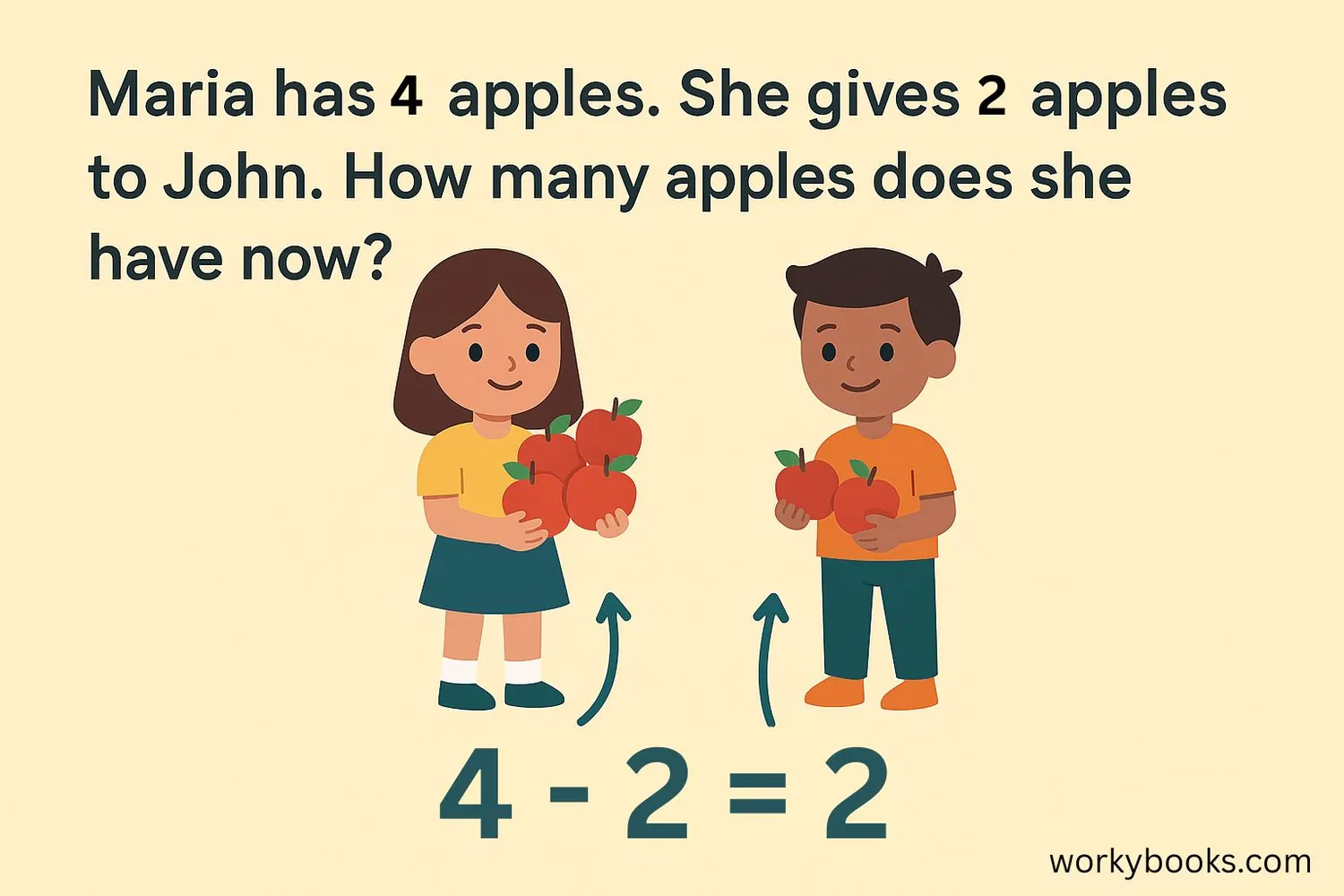
Word problems tell stories with numbers. To solve them, we translate the words into number sentences. Here's how:
Step 1: Read the problem carefully. Identify what is being asked.
Step 2: Find the numbers in the problem and what operation (+, -, ×, ÷) to use.
Step 3: Write a number sentence that represents the problem.
Step 4: Solve the number sentence.
Example 1: "Sara has 7 stickers. She buys 5 more. How many stickers does she have now?"
Numbers: 7 and 5
Operation: Addition (buys more)
Number sentence: 7 + 5 = ?
Solution: 12 stickers
Example 2: "There are 15 students in class. 8 are girls. How many are boys?"
Numbers: 15 and 8
Operation: Subtraction (total minus girls)
Number sentence: 15 - 8 = ?
Solution: 7 boys
Key words to look for:
Addition: sum, total, in all, altogether, combined, more than
Subtraction: difference, less than, fewer than, remain, left, take away
Word Problem Tip
Draw a picture to help visualize the problem before writing your number sentence. This makes it easier to see what operation to use.
Number Sentences Practice Quiz
Test your understanding with this 5-question quiz. Choose the correct answer for each question.
Frequently Asked Questions
Here are answers to common questions about number sentences:
Math Trivia
Discover interesting facts about numbers and math:
Ancient Equations
The oldest known mathematical equations date back to ancient Babylon around 1800 BCE. They were written on clay tablets using a base-60 number system.
Equals Sign
The equals sign (=) was invented by Welsh mathematician Robert Recorde in 1557. He chose two parallel lines because "no two things can be more equal."
Zero as a Number
The concept of zero as a number (not just a placeholder) was developed in India around the 5th century. This was a crucial step for developing equations and algebra.
Longest Math Proof
The longest mathematical proof contains over 15,000 pages! It solves a problem about the properties of a mathematical object called the "enormous theorem."





